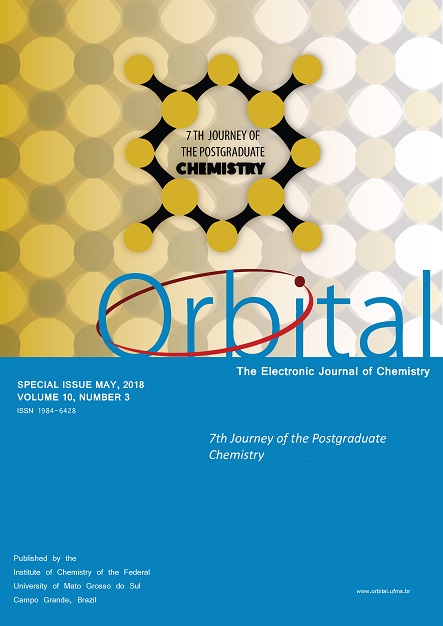Influence of Deposition Methodology and Heating Treatment on Dye Sensitized Solar Cell with Natural Extract
- anthocyanins,
- gratzel cells,
- hibiscus,
- PV cells
Copyright (c) 2018 Orbital: The Electronic Journal of Chemistry

This work is licensed under a Creative Commons Attribution-NonCommercial-NoDerivatives 4.0 International License.
Abstract
In this study, it was investigated the photovoltaic parameters of Dye Sensitized Solar Cells (DSSC) and the thin coating morphology of TiO2 by Doctor Blading and Spin Coating methods, sintered at 450 ºC and 450 ºC with a heating rate of 0.4 ºC s-1, using a natural dye extract from Hibiscus. These properties were studied by scanning electron microscopy (SEM), photochronoamperometry and curves j-V. It was demonstrated that all solar cells produced are photosensitive with an excellent charge injection. The cell with a better energy conversion (jsc = 0.53 mA cm-2; Voc= 0.471 V and FF= 0.518), uniform and flawless morphology was obtained to cell coated by Doctor Blading method, with a heat treatment of 450 ºC/0.4 ºC s-1.


